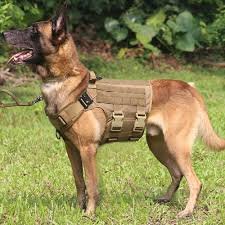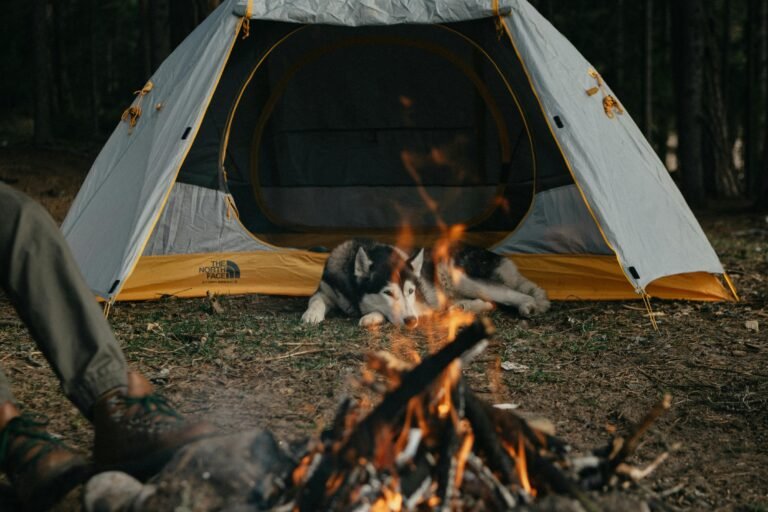Just because winter has arrived doesn’t mean your dog should become a couch potato. Keeping your furry friend active is necessary for their physical and mental health during the colder months. You can adapt your routine and find creative ways to ensure your dog remains engaged and exercised. From outdoor adventures on milder days to interactive indoor games, this guide provides useful tips to help you maintain your dog’s activity levels and overall well-being throughout the winter season.
Understanding the Importance of Winter Exercise for Dogs
A consistent exercise routine during the winter months is necessary for your dog’s overall health and happiness. Just because the temperature drops doesn’t mean you should neglect your dog’s activity needs. Engaging in regular winter exercise can help maintain your pet’s physical fitness, mental acuity, and emotional stability, ensuring that your furry friend thrives even in the colder months.
Physical Health Benefits
Health is a top concern when it comes to winter exercise for dogs. Keeping your dog active during these months prevents obesity, strengthens muscles and joints, and can help combat common ailments such as arthritis. Regular activity also supports cardiovascular health, ensuring that your dog stays fit and energetic regardless of the season.
Mental Stimulation and Well-Being
For your dog, mental stimulation is just as important as physical exercise. Engaging in activities that challenge your dog’s intellect helps keep their minds sharp and reduces boredom. Incorporating games, puzzles, or training sessions into your winter routine can significantly enhance your dog’s mental well-being, which is necessary for a balanced and happy pet.
Well-being is heightened when you keep your dog’s mind active through stimulating activities. Mental challenges, such as obedience training or scent work, provide necessary stimulation that can reduce anxiety and unwanted behaviors during the long winter months. By finding creative ways to engage your dog’s mind, you foster their happiness and strengthen your bond, making winter a season of enrichment, not isolation.
Appropriate Winter Activities for Dogs
Any winter day can be transformed into a fun-filled adventure for your dog with the right activities. Whether indoors or outdoors, keeping your furry friend engaged during the colder months is important for their physical and mental well-being. Engage in a variety of activities that cater to your dog’s energy levels and preferences—ensuring that winter doesn’t mean a sedentary lifestyle for your beloved pet.
Indoor Training Games
Games that stimulate your dog mentally can be just as rewarding as physical exercise. You can create an indoor obstacle course using household items, practice obedience training, or play hide and seek with treats or toys. These games not only keep your dog active but also strengthen your bond by reinforcing positive behaviors and skills.
Outdoor Exercises in Snow and Cold
Dogs thrive in the great outdoors, even when the temperatures drop. Outdoor activities in the snow can be wonderfully invigorating and provide natural excitement. You can take your dog for a brisk walk, engage in a spirited game of fetch, or partake in snowshoeing or skiing together. Just be sure to monitor their comfort and safety, particularly with the cold weather.
It’s important to pay attention to your dog’s tolerance for cold weather and ensure they have proper gear, such as booties or a dog coat, when needed. Snow can be a playground for many dogs, with the ability to dig and bury their noses in fresh powder. Incorporating varied activities like agility courses, snowball fetch, or allowing them to romp freely can help maintain their fitness and joy. Always bring water along for hydration and check for ice clumps between their paws to keep them comfortable during your adventures.
Safety Considerations for Winter Activities
Some winter activities can pose risks for your dog, so it’s crucial to be vigilant. Before heading outside, ensure that your pup is fit for the cold weather and choose activities that are suitable for their age, health, and breed. Keep a close eye on your dog during playtime, as snow and ice can hide dangerous objects. Always have a plan to warm up your dog if necessary and consider the potential risks of frostbite on exposed skin.
Proper Gear for Your Dog
Along with ensuring your dog’s safety, investing in the right gear can make winter outings more enjoyable. Consider a well-fitted dog coat or sweater to retain body warmth, especially for smaller or short-haired breeds. Booties can protect your dog’s paws from ice, salt, and cold surfaces. Also, reflective gear ensures visibility during short winter days, keeping you and your dog safe while exploring the winter wonderland.
Recognizing Signs of Cold Stress
Signs of cold stress can vary in each dog but are generally noticeable if you know what to look for. Symptoms include shivering, lethargy, and reluctance to move. Watch for your dog lifting their paws off the ground or seeking shelter, as these are indicators they may need to warm up. If you notice any of these signs, it’s time to head indoors.
The signs of cold stress should not be ignored, as prolonged exposure to low temperatures can lead to serious health issues for your dog. Shivering is often the first sign, indicating that your dog is struggling to maintain body heat. As the cold stress worsens, you might observe your dog becoming increasingly sluggish or unresponsive. Pay attention to changes in behavior, such as hunching their body or whining, which suggest they are uncomfortable. When you notice these symptoms, taking immediate action to warm your dog is crucial.
Creating a Balanced Winter Exercise Routine
Your dog’s exercise routine doesn’t need to suffer during the winter months. By developing a balanced routine that includes a mix of outdoor activities, indoor play, and mental stimulation, you can help keep your pup fit and engaged. Aim for daily activities in varying intensities, ensuring your furry friend receives the exercise they need while adapting to colder weather conditions.
Establishing Consistent Exercise Habits
Above all, establishing consistent exercise habits is foundational for your dog’s well-being. Schedule daily walks or playtimes to maintain a routine, helping your dog understand when to expect activity. Consistency not only keeps them physically fit but also contributes to a sense of stability and security during the often unpredictable winter months.
Mixing It Up With New Activities
Before you settle into a monotonous routine, consider mixing it up with new activities. Winter offers unique opportunities to engage your dog in diverse ways—from snowshoeing to indoor agility courses. Introducing fresh experiences can stimulate both their body and mind, making exercise more enjoyable and less predictable.
Hence, exploring new activities not only aids in keeping your dog physically active but also builds their confidence and strengthens your bond. Try activities like hide and seek, dog-friendly snow games, or even agility training setups at home. Regularly changing the routine encourages engagement and excitement, ensuring that your dog looks forward to their exercise sessions, no matter the weather.
Nutrition and Hydration in Winter Months
Unlike the warmer seasons, your dog may have different nutritional needs during the winter months. With lower temperatures and potentially less outdoor activity, it’s important to ensure that their diet supports all their energy needs. Opt for foods rich in nutrients and calories that can help maintain their body temperature and provide sufficient energy for playtime in the snow or cold walks.
Adjusting Diet for Activity Levels
One way to keep your dog healthy during winter is by adjusting their diet based on activity levels. If your dog is less active, consider a slightly lower calorie food to avoid weight gain, while still providing necessary nutrients. Conversely, if they spend a lot of time playing in the snow, a more energy-dense diet can help fuel their playful moments.
Importance of Hydration
Diet plays a significant role in your dog’s hydration, but it’s equally important to ensure they have access to fresh water during winter. Just like humans, dogs can become dehydrated in cold weather, particularly if they are active outdoors. Make it a habit to replenish their water bowl frequently and encourage them to drink, as their thirst drive may be lower in colder months.
But staying hydrated goes beyond just water intake; the dry air indoors and the winter cold can lead to dehydration as well. Consider including wet food in their diet, as it can provide additional moisture. Make sure to pay attention to their water intake, and if they seem less inclined to drink, try offering water at room temperature or add a splash of low-sodium broth to entice them. Keeping your dog properly hydrated is vital for their overall health and winter wellness.
Keeping Your Home Dog-Friendly During Winter
Now that winter is upon us, it’s necessary to create a safe and inviting environment for your dog inside your home. Cold weather can dissuade outdoor activities, making it important to ensure that your living space accommodates your dog’s need for movement and stimulation. You can achieve this by dog-proofing your home, using non-slip rugs, and providing toys that encourage play while keeping your dog’s safety in mind.
Safe Indoor Spaces for Play
For your dog to enjoy indoor playtime, designate specific areas where they can move freely without getting hurt. Clear away fragile items and any potential hazards, and consider using baby gates to restrict access to certain parts of your home. Providing ample space for your dog to engage in activities like fetching or tug-of-war will keep them active and entertained throughout the winter months.
Maintaining a Comfortable Environment
With the winter chill, it’s important to keep your home warm and cozy for your furry friend. Ensure your heating system is functioning well, and consider using dog-friendly blankets and bedding to provide extra comfort. Position your dog’s bed in a warm area of the house to prevent them from feeling cold during the longer winter nights.
Understanding your dog’s comfort needs is key to creating a winter haven. Monitor the temperature in your home and adjust accordingly, as some breeds require more warmth than others. You can also use humidifiers to combat dry air, which can help keep your dog’s skin healthy during the colder months. Providing a consistent and comfortable environment will greatly enhance your dog’s well-being and happiness during winter.
Conclusion
Ultimately, keeping your dog active during the winter months is necessary for their physical and mental well-being. By exploring indoor activities, adjusting routines, and embracing the outdoors safely, you can ensure your furry friend stays engaged and happy. Regular exercise not only helps prevent weight gain but also supports a healthier lifestyle. So, make the most of the winter season by incorporating fun and stimulating activities that cater to your dog’s needs, ensuring they remain energetic and content throughout the colder months.






